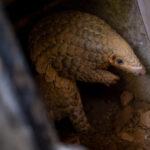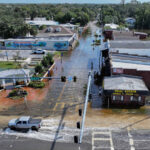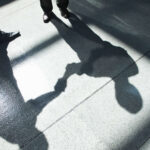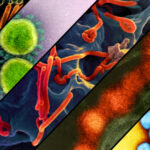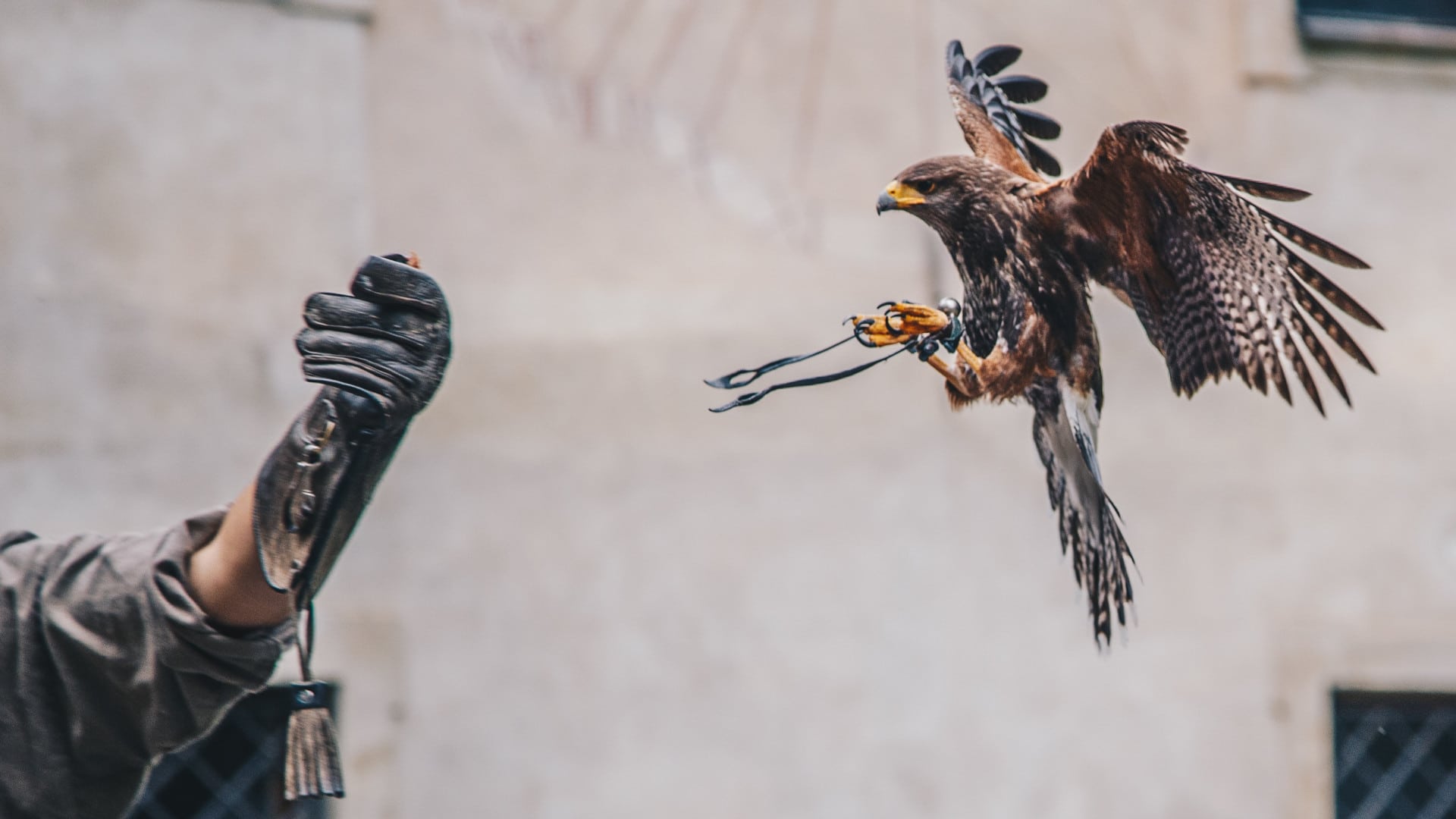When Helen Macdonald was in her 20s, she worked at a falcon breeding center in Wales, where every day she lifted eggs from incubators, weighed them, and used a graphite pencil to sketch the outline of each growing embryo onto its eggshell. But she always felt dizzy and troubled on leaving the incubation room, a feeling she eventually traced to her premature birth, the months she herself spent in an incubator, and the loss of the twin brother that was born with her. One day she lifted one of the falcon’s eggs to her mouth and clucked at it. The returning cluck of the unborn chick brought her to tears, dispelling the loneliness that had tugged at her in the incubation room.
Small moments of connection like this power Macdonald’s “Vesper Flights,” a collection of 41 essays, some previously published in The New York Times Magazine, The New Statesman, and elsewhere, others new to this book.
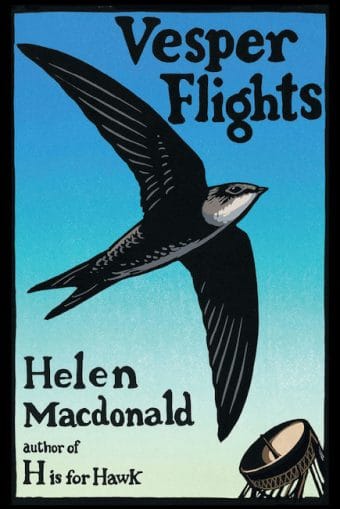
BOOK REVIEW — “Vesper Flights,” by Helen Macdonald (Grove Atlantic, 320 pages).
Macdonald, the author of 2014’s award-winning “H is for Hawk,” pokes and prods her way through a panoply of encounters with nature, from the upsetting to the mundane to the sublime. Her book is a reminder of the fact that the natural world is not a monolith, and that the ways in which we engage with landscapes and with animals can be ugly, or silly, or transitory, or, in the case of Macdonald pressing her lips to a falcon’s eggshell, transformative.
“H is for Hawk” was both memoir and nature writing, telling the story of Macdonald’s training of a goshawk in the year following her father’s sudden death. “Vesper Flights” is a similar blend of personal experience (she alludes to broken hearts, lost friends, her father’s death) and incisive, intriguing accounts of her interactions with animals, landscapes, and the people who care about them.
In the introduction, Macdonald refers to her book as a Wunderkammer — a Renaissance-era cabinet of curiosities in which the learned and elite stored various artifacts. The juxtaposition of these artifacts in a single space allowed their commonalities and differences to speak to each other. It’s an apt description: Many of the essays pick up a thread or motif from the one before it, allowing us to examine a variety of images in conjunction with each other.
And, intriguingly, although all the essays are written with Macdonald’s erudite voice and sharp eye, they vary widely in form. Some are brief gut-punches that depict a single moment, such as “Inspector Calls,” a two-page scene about a boy with autism bonding with Macdonald’s parrot, and “Lost, But Catching Up,” in which Macdonald, stricken with grief in the wake of her father’s death, experiences a moment of grace and identification when she sees a foxhound. Others are longer pieces in which Macdonald puts on the hat of journalist: In “In Her Orbit,” for example, she travels with a Mars specialist to the remote Andes, and in “Swan Upping,” she follows along with the traditional yearly boating expedition up the Thames to catalog the Queen’s swans.
One of the biggest surprises is her engagement with politics. In “Swan Upping,” Macdonald, who is British, explains that she wanted to report on the swan uppers in the wake of the Brexit vote in order to understand the swan’s place as a symbol of nationalist British pride. In another essay, she writes about watching a flock of cranes in Hungary during the refugee crisis, a hundred miles north of the barbed fence on the Serbian border. She writes of the beauty of the idea that national borders mean nothing to birds and about a man who tried to make a flock of Arctic swans more British by giving them names like Jane Eyre. And she writes about classism in the birding industry, about the parallels between animal tracking and the military industrial complex, and about historical connections between anxiety about war and cataloguing the birds in our skies.
The specter of climate change hangs over many pieces. In a powerful essay about her migraines, Macdonald locates lessons about environmental destruction in her own body. She posits that she cannot recognize her migraine symptoms until they descend upon her because she’s hardwired not to recognize them, just as we blind ourselves to our rapidly transforming world because our minds cannot conceive of the coming destruction.
Macdonald is also concerned with interrogating humanity’s repeated, insistent, often subconscious tendency to project our own meaning and symbolism onto animals. In “Nothing Like a Pig,” she writes about an encounter with a boar, an animal about which she had a preconceived mythology borne of reading medieval literature as a student — but an animal that subverts her expectations when she meets it face to face. She argues that we see what we want to see in landscapes, birds, and animals, whether to enforce our nationalist ideology or to enforce our own personal narratives.
Macdonald shows the folly of indulging in that sort of thinking unexamined — and yet, she’s vulnerable to the same mindset. There are many moments in this collection where Macdonald indulges in crafting her own fables around the natural world: when a swan sits beside her while she nurses a broken heart, when the flight patterns of swifts encourage her to meditate on community. She allows herself the space to take solace in those fables, while also acknowledging them for what they are. In her world, we can embrace well-lit, scientific-fueled wonder while also embracing numinous transcendence.
Macdonald emphasizes the importance of both science and literature to convince humanity of nature’s worth, and the beauty of her writing certainly shows the power of a well-turned phrase, or a well-observed detail, to inspire the reader to go gaze out the window. She tells us of glowworms in an old chalk quarry, of the thrill and terror of a murmuration of starlings. Some of the most memorable images are the surprising ones, when animals appear in the heart of so-called human spaces: birds swirling around Manhattan to gobble the insects caught in the wind tunnels around skyscrapers or falcons finding homes in a wasted industrial site in Dublin. These moments remind us that we are inextricable from nature and nature is inextricable from the spaces we have created. In her opening essay, Macdonald considers bird nests made of cigarette butts and underwear, and asks, with a mix of wonder and horror, “What have they made out of what we have made of this world?”
“Vesper Flights” is at its best in these liminal moments, when animals take over human spaces or impart the opposite lesson that we might have expected, when Macdonald grasps for meaning or concludes that in a particular instance, meaning isn’t necessary at all. But if there’s an overarching theme, it’s the urgency of caring about all of this. “Vesper Flights“ is partly an elegy for a dying world and partly a paean to her love of the natural world, a book where our fellow creatures are “bewitching, complicated, and always new.”
Emily Cataneo is a writer and journalist from New England whose work has appeared in Slate, NPR, the Baffler, and Atlas Obscura, among other publications.



